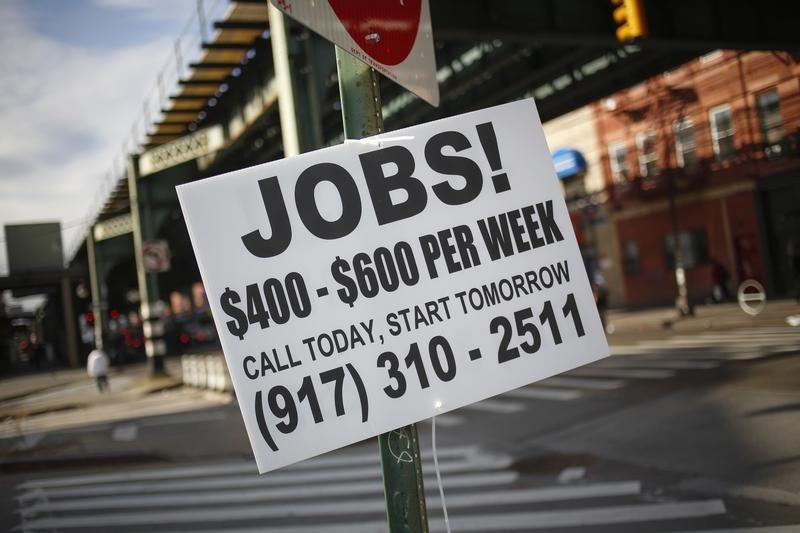(Bloomberg Opinion) -- Amid a February jobs report in which an unexpectedly small gain of 20,000 payroll jobs was the big news, the 3.8 percent unemployment rate got less attention. It was down two-tenths of a percentage point from January, but the January number was probably boosted by the government shutdown, and small one-month moves like that usually don’t signify much anyway.
What might signify something, though, is that the unemployment rate was also 3.8 percent last May, August and October.
So the unemployment rate has been pretty much flat for almost a year. Smooth out the noise using three-month moving averages, and it looks like it might even be trending upward a little.
Is this significant? Well, it’s hard to tell yet. There was, for example, a long pause in the unemployment rate’s decline in 2015 and 2016, which coincided with a marked slowdown in economic growth that has since been dubbed a mini-recession. But then the unemployment rate began falling again and economic growth accelerated. If the unemployment rate were to rise in the coming months, though, that would flash a pretty big warning signal.
Yes, every recession since World War II has been preceded by or coincided with a trough in the unemployment rate. Since 1957, Federal Reserve Bank of St. Louis economist Kevin L. Kliesen calculated last year, the average lag between the unemployment rate hitting bottom and the start of a recession (as determined by the National Bureau of Economic Research’s Business Cycle Dating Committee) has been 11 months.
This has limits as a leading indicator because it can be hard to know for sure whether the unemployment rate has troughed until well after the fact. There are a couple of 1960s false alarms apparent in the above chart. The most relevant to present circumstances may be the two-year stall that began in early 1966 with the unemployment rate at 3.8 percent, just as it is today. After a big fiscal stimulus (the federal deficit grew from 0.2 percent of gross domestic product in fiscal 1965 to 2.7 percent in 1968), the unemployment rate dropped to 3.4 percent and the economy grew for another couple of years. The U.S. is currently in the midst of the biggest round of late-in-the-business-cycle fiscal stimulus since then, with the deficit going from 2.4 percent of GDP in fiscal 2015 to an anticipated 4.2 percent in the current fiscal year. We’ll see how that plays out.
The unemployment rate has taken a lot of criticism in recent years as an economic indicator. Unlike the payroll jobs numbers, which are reported to the Bureau of Labor Statistics by employers, the unemployment rate is derived from the monthly Current Population Survey of 60,000 households. Census Bureau survey-takers ask people if they and others in their household (1) did work for pay or profit in the mid-month survey’s reference week and (2) if they didn’t work, had looked for a job in the past four weeks. There are more questions than that, and I’m oversimplifying, but the unemployment rate is basically the second group (those without jobs but looking) divided by the first group plus the second (aka the labor force).
What this misses in times of labor-market slack is people who want jobs but don’t think there is any point in looking, or who would like to work more hours than they actually did. There are other questions in the Current Population Survey that address some of these issues, and they result in the “alternative measures of labor underutilization” published by the Bureau of Labor Statistics. I’m also a big fan of the “prime age” (25 to 54) employment-population ratio as measure of medium- to long-term labor-market health.
When it comes to detecting cyclical shifts at a time of close-to-full employment, though, the unemployment rate has a lot going for it. If it suddenly gets harder to find a job, that should show up first in the unemployment rate. It hasn’t showed up there yet — but keep watching.
